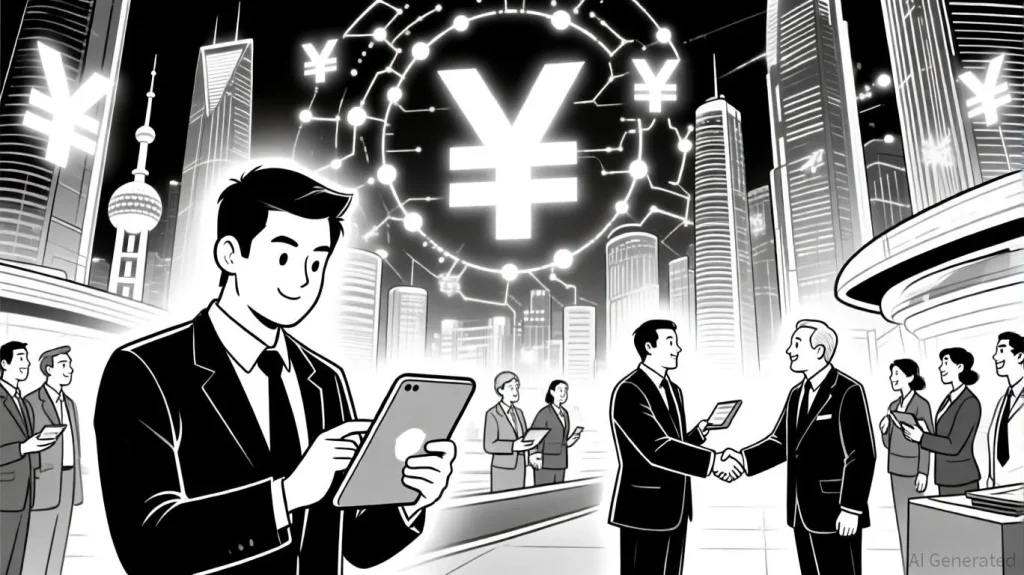Fintech Futures From Ant Group To Digital Yuan Experiments
Introduction
China’s fintech sector has transformed the way payments, credit, and wealth management operate for nearly a billion users. What began with mobile wallets and online marketplaces has expanded into a comprehensive digital finance ecosystem that shapes consumer behavior, business operations, and even monetary policy. Ant Group’s Alipay, Tencent’s WeChat Pay, and the People’s Bank of China’s digital yuan pilot have placed the country at the forefront of financial innovation. Comparing archival regulatory records with today’s experiments highlights both the rapid rise of fintech and the challenges of balancing innovation with oversight.

Ant Group: Building the Super App of Finance
Ant Group, originally an affiliate of Alibaba, built Alipay into one of the largest digital payment platforms in the world. By 2024, Alipay accounted for more than half of all mobile transactions in China, with services extending far beyond payments. Users could access loans, insurance, and investment products, all within the same application.

Archival company reports show how Ant Group’s growth was fueled by China’s underbanked population in the 2010s. Millions of small merchants and consumers gained access to credit for the first time. Ant’s Yu’e Bao money market fund became the largest in the world within a few years, demonstrating the scale of user trust.
Yet regulatory intervention has reshaped the company. In 2020, the suspension of Ant’s planned IPO underscored concerns about financial stability and systemic risk. Subsequent reforms forced Ant to restructure as a financial holding company. These measures reflect a broader trend: innovation must align with national objectives of stability and control.
Tencent and the WeChat Pay Ecosystem
Tencent’s WeChat Pay integrates seamlessly into the country’s dominant messaging platform, giving it a unique advantage. Unlike Ant, which operates as a financial super app, Tencent embeds finance into daily social interactions. Paying utility bills, booking taxis, or splitting restaurant checks are all part of a unified experience.
Tencent’s financial services extend into microloans and wealth management, but the company has faced similar regulatory scrutiny. Archival statements from the China Banking and Insurance Regulatory Commission highlight the importance of preventing over-lending and protecting consumer data. Despite restrictions, Tencent continues to leverage its massive user base, positioning WeChat Pay as a critical component of China’s digital infrastructure.
The Digital Yuan: Central Bank Innovation
The People’s Bank of China has gone further than any major economy in piloting a central bank digital currency. The digital yuan, or e-CNY, is designed as a state-backed alternative to private payment platforms. By 2025, pilot programs had expanded to over 20 provinces, with millions of transactions recorded during shopping festivals and public transport trials.
Archival central bank documents emphasize the goals of financial inclusion, efficiency, and national security. By ensuring state control over the monetary base, the digital yuan reduces reliance on private platforms while providing regulators with greater visibility into transactions. Critics note that it also raises questions about data privacy, but supporters highlight its potential for improving cross-border settlement and reducing transaction costs.
Global Comparisons and Experiments
China’s fintech landscape is often compared with Western models, but its scale and integration are distinctive. In the United States, fintech services remain fragmented across multiple platforms. In China, a small number of firms dominate, supported and constrained by state policy. This integration has enabled rapid adoption but has also concentrated systemic risks.
Globally, other regions are beginning to experiment with programmable settlement systems. Some initiatives, including regional stable assets, are designed to improve transparency and efficiency in cross-border trade. Observers note that these experiments share conceptual similarities with China’s digital yuan, though on different scales and with different governance structures. Such comparisons highlight the diversity of approaches in the global fintech ecosystem, where innovations often echo each other across borders.
Archival to Contemporary Lessons
The archival record shows how fintech innovation has been encouraged by gaps in traditional banking. In the 2010s, millions of Chinese consumers lacked credit histories, creating opportunities for mobile-first solutions. Today, those same platforms are being folded into a broader regulatory framework that emphasizes stability. The continuity lies in pragmatism: allowing rapid innovation when needed, and tightening oversight when risks grow.
This balance is not unique to China. Historical comparisons suggest that every financial system evolves through cycles of innovation and regulation. What distinguishes China is the speed at which both occur, enabled by scale and state capacity.
Challenges for the Next Decade
China’s fintech firms face several challenges. Regulatory ceilings on lending and wealth management limit their profitability. Competition between state-backed digital currency and private platforms could reshape user behavior. Global expansion remains limited by trust issues and geopolitical scrutiny. At the same time, China’s lead in digital payments provides a foundation for exporting its model, particularly in Belt and Road partner countries.
Technological challenges also persist. The need for secure, interoperable systems is critical as data flows expand. Cybersecurity threats, fraud prevention, and international standards will determine how China’s fintech evolves on the global stage.
Conclusion
China’s fintech journey, from Ant and Tencent to the digital yuan, reflects a balance of innovation, scale, and regulation. Archival records reveal the gaps that gave rise to mobile-first solutions, while contemporary debates highlight the effort to embed fintech within a secure national framework. As global experiments in programmable assets emerge, China’s model stands as both a reference and a competitor. For policymakers, the lesson is clear: digital finance is no longer a niche but a central pillar of economic strategy. For users, the seamless integration of payments into daily life has already reshaped expectations of what money can do.




